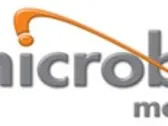The article discusses Tesla’s slow transition to making its Supercharger network more widely accessible, particularly for non-Tesla electric vehicles. Despite Tesla’s own vehicles being equipped with a new charging standard (North American Charging Standard), or NACS, the company has not prioritized improving its Supercharging capabilities for other brands of electric vehicles.
As a result, drivers like Ferraro, who purchased an electric vehicle without a Tesla port, are struggling to find adapters that allow them to charge their cars at Tesla stations. These adapters have been delayed and are expensive, further exacerbating the issue.
Tesla’s decision to lay off nearly 500 employees working on Supercharging in April has also hindered the company’s ability to maintain its charging network, with some of these workers eventually being rehired. However, there still aren’t enough staff to keep the system running smoothly.
The article notes that Tesla drivers are not happy about the state of Supercharging either, particularly when non-Tesla vehicles take up space at charging stations. Satisfaction scores have plummeted according to J.D. Power’s ongoing survey.
In contrast, rival networks such as EVgo Inc. and ChargePoint Holdings Inc. have far outstripped Tesla in terms of public fast-charging stations, with almost three times as many stations operated by these companies for every one Supercharger station. These networks already have plugs for Tesla ports and are rapidly adding more.
The potential to tap into Tesla’s charging network has emboldened EV-curious drivers to purchase battery-powered rigs from other brands like Ford Motor Co. and General Motors Co. This has essentially traded a powerful sales incentive for a revenue stream from other vehicles, making Tesla less of a car company and slightly more of a utility.
Overall, the article suggests that Tesla’s slow transition to making its Supercharger network more widely accessible is likely to be short-lived, as more chargers from rival networks come online and Tesla ports and adapters finally become available for non-Tesla vehicles.



